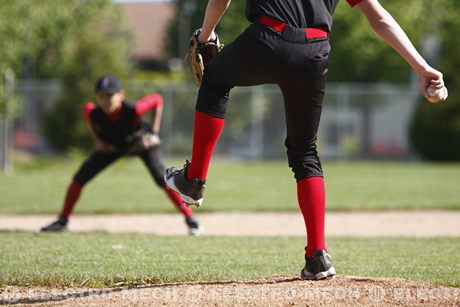
Just like art or fashion or a particular field of study, your child may have a special talent and affinity towards a particular sport while growing up. Almost all sports require physical exertion, but perhaps none more than a catcher in baseball and a football player. As this baseball scoreboards article is directed towards baseball, let us take a look at what you, as a parent of a budding catcher needs to know about protecting him/her from injuries.
Some baseball scoreboards basics before Buying: before you go out to buy the equipment, make a few mental notes:
1. Expensive Equipment – before you start looking into equipment, know that it is going to be quiet expensive, but you should probably not spare any expense when it comes to your child’s safety. However, if your child is very young and insistent about trying out for a catching position on a team, you should first take him or her to a team practice game. Most teams have extra sets of catching gear. Encourage your child to wear that equipment and play in the practice game as a catcher. This exercise is merely meant for you to gauge whether your child is serious about becoming a catcher, because if the child is trying out for the position just out of curiosity the equipment you purchase for them is going to be wasted when their curiosity subsides and they move onto another position or sport.
2. Perfect Fit – now that you know your child is serious about becoming a catcher, you should not compromise on the size of the equipment. Do not buy one size bigger so that it lasts a year longer, because your child needs to be completely comfortable in it so as to have perfect flexibility and maneuverability. If your child is slow in catching a speedy pitch because of the loose fitting, he/she could be seriously injured.
The Equipment:
1. Mask and Helmet: the most important part of the gear is the helmet. Helmets come in different shapes and sizes according to the age of the child. Be sure to purchase a helmet that fits your child’s face snugly and has extended throat and ear guards. Different companies have different size scales, but most make helmets according to the player’s head’s circumference measurement.
2. Chest Protector: buy a chest protector that shields the upper torso, offers some protection to the throat and the clavicle and has good ventilation, so that your child is completely protected and isn’t suffocating from the heat during the game either.
3. Shin Guards: buy shin guards that offer protection from the knees to the top of the shoes. To protect the knees better, look into buying knee savers.
4. Catcher’s Mitts: mitts have a sturdier and larger pocket for catching the pitches. Unlike regular gloves, they are measured according to the circumference. For extra protection buy larger mitts as they have more padding.
5. Protective Cup: for a boy this is very important because of the position he sit in, his groin area is exposed in the instance he fails to catch a pitch.
6. Throat Guard: this is an optional piece of equipment especially if you have purchased a helmet and chest cover that protect the throat. However, if you haven’t it is important that you invest in one.
For more information, go to:
http://shop.mlb.com/home/index.jsp
